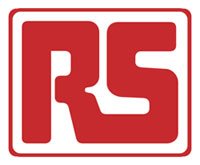 The University of Adelaide Team has produced a prototype board based on the STR710. This was necessary to test tooling at the university and basic hardware concepts.
The University of Adelaide Team has produced a prototype board based on the STR710. This was necessary to test tooling at the university and basic hardware concepts.
The PCB was manufactured at the University by the technical staff and loaded by a student team member. During testing some minor errors were noted. The PCB was modified and a fully functional circuit was yielded.

As the prototype has been tested successfully, the PC104 Recovery Controller can now be manufactured confidently knowing the basic hardware has been validated.
When the Recovery Controller is completed it will undergo initial testing with a PC, followed by integration to the central Flight Computer (FC).
The Linux based flight computer code is being developed, for use on the Arcom Vulcan XScale board. Integration and testing of a wireless telemetry using 900Mhz spread spectrum transmitters, will be conducted using Aerocomm data modems supplied by Tekdis.
To help speed implementation the team decided to use a PC104 carrier card from embedded arm to interface the Aerocomm modem directly to the Vulcan PC104 data bus.







